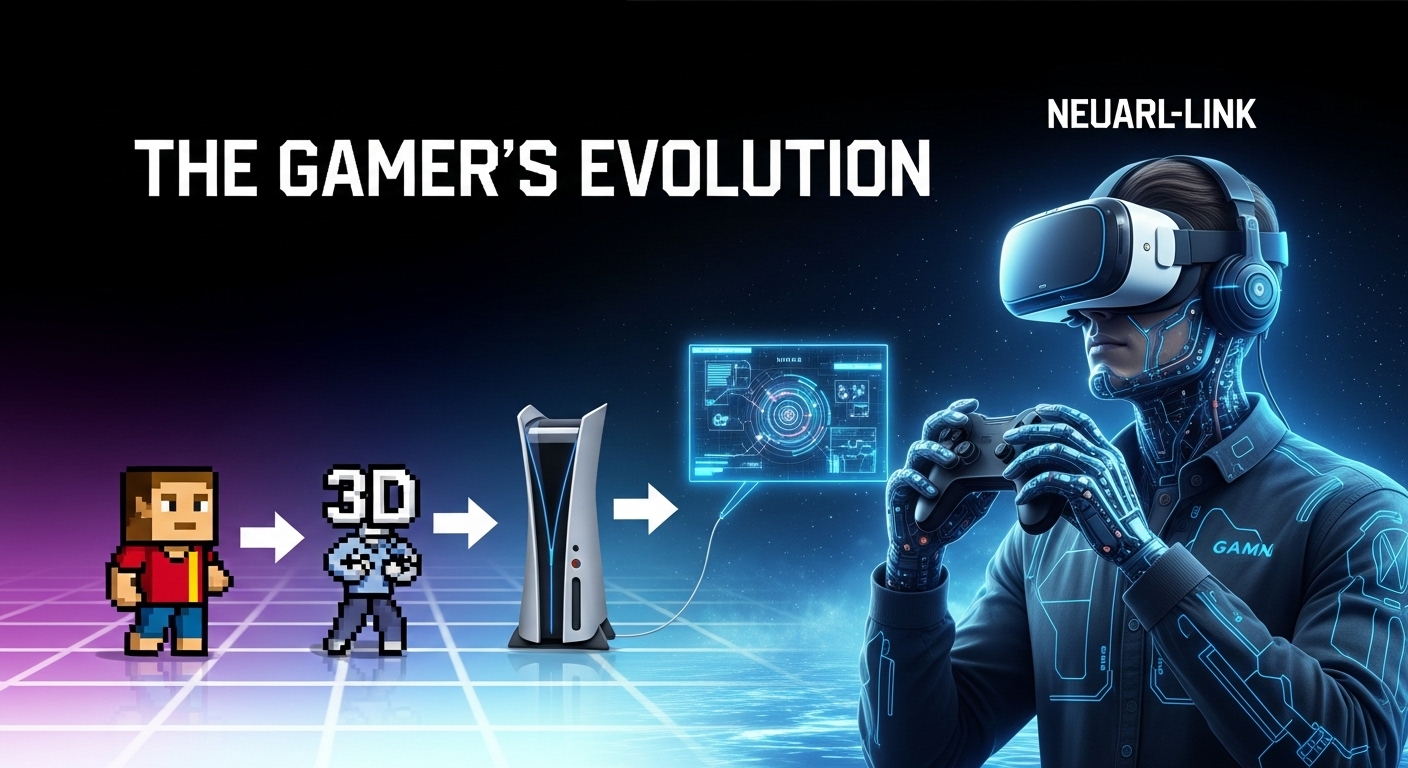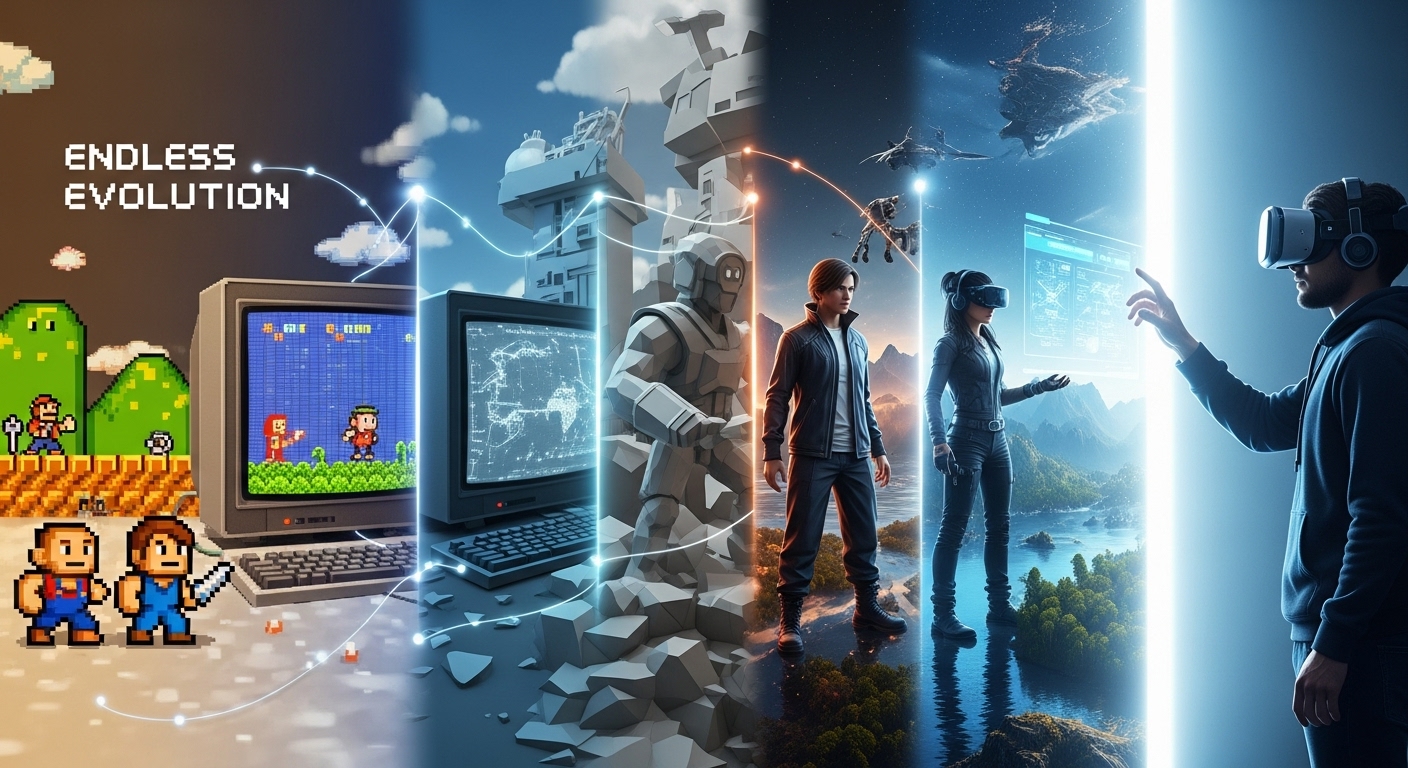Introduction: The Gaming Phenomenon
Gaming has become more than just a hobby. It’s a global culture, a thriving industry, and a form of art that has captured the imaginations of millions of people around the world. From the early days of arcade games and the introduction of home consoles to the expansive virtual worlds of modern gaming, the journey has been nothing short of extraordinary. Over the past few decades, gaming has evolved from simple 8-bit graphics to hyper-realistic simulations that push the boundaries of technology and storytelling.
This blog post explores the evolution of gaming, its impact on culture, and where the future of gaming is headed. Whether you’re a seasoned gamer or a newcomer to the world of video games, there’s no denying the immense influence that gaming has had—and continues to have—on the world around us.
The Birth of Video Games: From Pixels to Arcades
In the late 1960s and early 1970s, the concept of video gaming began to take shape, though it was far from the immersive experiences we know today. The first widely recognized video game, Pong, was created by Atari in 1972. It was a simple game—basically a digital version of table tennis—but it was revolutionary at the time. As more arcade machines like Space Invaders and Pac-Man appeared, the gaming industry began to grow rapidly. Arcades became the epicenter of gaming, drawing crowds who enjoyed competing for high scores and immersing themselves in the neon-lit environments.
Early video games were quite basic, with limited graphics and simple mechanics. These primitive games were limited by the technology of the time, but they served as the foundation upon which the entire gaming industry would eventually build. Pong was essentially a rudimentary simulation of a tennis game, and it was controlled by a simple knob that let players move their paddles up or down. This simplicity made the game accessible to anyone, whether they were seasoned gamers or complete beginners.
While the graphics were basic, the entertainment value was undeniable. People flocked to arcades to test their skills against each other, and competitive gaming culture was born. It was the early days of video games, and no one could predict that they would soon become a cornerstone of modern entertainment.
The Rise of Home Consoles: Gaming in Your Living Room
The 1980s saw a major shift in the gaming landscape. The rise of home consoles allowed people to play video games from the comfort of their own living rooms. The Nintendo Entertainment System (NES) was one of the most significant consoles of this era, bringing iconic games like Super Mario Bros. and The Legend of Zelda into homes across the globe. As technology improved, consoles became more powerful, offering better graphics, sound, and gameplay experiences.
The success of the NES demonstrated the potential for home gaming to be just as popular as arcade games. More families began purchasing consoles, and the gaming industry began to expand beyond niche markets. With consoles like the Sega Genesis, Super Nintendo, and later the Sony PlayStation, the gaming market grew exponentially. Developers were no longer constrained by the limits of arcade hardware and could create more complex and innovative games.
Consoles also started to feature accessories like light guns, dance mats, and multitaps, further enhancing the gaming experience. The Super Nintendo (SNES) and the Sega Genesis introduced 16-bit graphics, marking the start of an era where games began to look significantly better and more detailed.
During this period, video game developers also began to focus on developing more narrative-driven games. Final Fantasy VII, released for the Sony PlayStation in 1997, was one of the first video games to include an immersive story that rivaled films and books. The game’s rich world-building, emotional character arcs, and gripping narrative showed the potential of video games as a medium for storytelling.
The Golden Age of 3D: Pushing the Boundaries of Graphics and Gameplay
The late 1990s and early 2000s marked a transformative period for gaming. With the introduction of 3D graphics, games became more visually dynamic and realistic. The Sony PlayStation, Nintendo 64, and Sega Dreamcast ushered in a new generation of gaming consoles that made the leap to three-dimensional gameplay.
Super Mario 64, released for the Nintendo 64 in 1996, was a landmark moment in the history of gaming. It was one of the first games to fully embrace 3D environments and was an instant success, revolutionizing the platformer genre. The game’s open-world design, intricate level design, and fluid movement allowed players to explore vast environments in a way that had never been possible before. The Legend of Zelda: Ocarina of Time followed in 1998 and set new standards for open-world exploration, puzzle-solving, and quest design.
This era also saw the rise of fully 3D action-adventure games, such as Tomb Raider, Metal Gear Solid, and Resident Evil. These games helped define what 3D gameplay could look like, offering players vast, detailed worlds and complex, engaging narratives. Graphics were still relatively blocky compared to today’s standards, but the leap from 2D to 3D was monumental. Games like Final Fantasy VII and Gran Turismo also highlighted the potential of high-quality visual design, further pushing the limits of what was possible.
The Online Revolution: Multiplayer Games and the Birth of eSports
As the gaming industry matured, the introduction of the internet began to transform gaming in profound ways. The late 1990s and early 2000s marked the dawn of online gaming, which allowed players to connect with others from around the world and engage in multiplayer experiences. The Xbox Live service, launched in 2002, was a game-changer, enabling gamers to play together over the internet.
Online multiplayer games like Halo 2 and Counter-Strike became wildly popular, offering competitive experiences that could be accessed from home. This shift brought with it the rise of eSports—competitive video game tournaments that often offered substantial cash prizes and broadcast their matches to global audiences. Games like StarCraft, League of Legends, and Dota 2 became staples of the eSports scene, while organizations and teams dedicated to competitive gaming sprang up all over the world.
At the same time, online role-playing games (MMORPGs) like World of Warcraft and Final Fantasy XI introduced persistent online worlds where players could interact with one another, embark on quests, and build communities. The social aspect of gaming became more pronounced, and games that emphasized team play, cooperative gameplay, and global interaction flourished. Players could now form friendships, rivalries, and alliances in virtual worlds that felt as real as the ones they inhabited offline.
The Modern Era: Realism, Open Worlds, and Virtual Reality
As gaming entered the 2010s, the level of realism in graphics and gameplay reached new heights. Modern consoles like the PlayStation 4, Xbox One, and Nintendo Switch offered advanced graphics, faster processing speeds, and more immersive experiences. Games such as The Witcher 3: Wild Hunt, Red Dead Redemption 2, and The Last of Us Part II pushed the boundaries of what games could look like, offering players expansive, open-world environments filled with intricate details and realistic animations.
In the world of gaming, open-world design became a significant trend. Games like Grand Theft Auto V and The Elder Scrolls V: Skyrim allowed players to roam vast, open environments and interact with the world in dynamic ways. These games often featured branching storylines, allowing players to make choices that would affect the world around them. The flexibility and freedom offered by these open worlds became a hallmark of modern gaming.
The introduction of virtual reality (VR) gaming marked the next major frontier. With devices like the Oculus Rift, PlayStation VR, and HTC Vive, VR technology allowed players to experience gaming in a way that was completely immersive. While still in its early stages, VR gaming promised to transport players into entirely new worlds, giving them the ability to physically move, interact, and explore environments like never before.
The Future of Gaming: AI, Cloud Gaming, and Beyond
As we look ahead to the future of gaming, it’s clear that the next generation of gaming will be defined by advancements in artificial intelligence (AI), cloud gaming, and new immersive technologies. The rise of AI has already begun to revolutionize the way games are designed. In the near future, we may see games with even more advanced non-playable characters (NPCs) that can respond to players’ actions in dynamic, lifelike ways.
Cloud gaming, which allows players to stream games without needing powerful hardware, is another area poised for growth. Services like Google Stadia and Xbox Cloud Gaming have already begun to transform the way people access games, allowing gamers to play high-quality titles on a variety of devices with minimal lag and no need for expensive hardware upgrades.
Another exciting development is the rise of augmented reality (AR) and mixed reality (MR), technologies that blend virtual elements with the real world. While still in its infancy, AR gaming could offer new types of experiences, where players interact with the world around them in unique and exciting ways.



